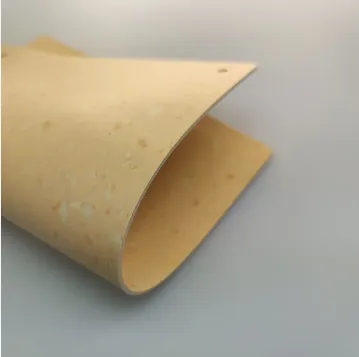
- Afrikaans
- Albanian
- Amharic
- Arabic
- Armenian
- Azerbaijani
- Basque
- Belarusian
- Bengali
- Bosnian
- Bulgarian
- Catalan
- Cebuano
- Corsican
- Croatian
- Czech
- Danish
- Dutch
- English
- Esperanto
- Estonian
- Finnish
- French
- Frisian
- Galician
- Georgian
- German
- Greek
- Gujarati
- Haitian Creole
- hausa
- hawaiian
- Hebrew
- Hindi
- Miao
- Hungarian
- Icelandic
- igbo
- Indonesian
- irish
- Italian
- Japanese
- Javanese
- Kannada
- kazakh
- Khmer
- Rwandese
- Korean
- Kurdish
- Kyrgyz
- Lao
- Latin
- Latvian
- Lithuanian
- Luxembourgish
- Macedonian
- Malgashi
- Malay
- Malayalam
- Maltese
- Maori
- Marathi
- Mongolian
- Myanmar
- Nepali
- Norwegian
- Norwegian
- Occitan
- Pashto
- Persian
- Polish
- Portuguese
- Punjabi
- Romanian
- Russian
- Samoan
- Scottish Gaelic
- Serbian
- Sesotho
- Shona
- Sindhi
- Sinhala
- Slovak
- Slovenian
- Somali
- Spanish
- Sundanese
- Swahili
- Swedish
- Tagalog
- Tajik
- Tamil
- Tatar
- Telugu
- Thai
- Turkish
- Turkmen
- Ukrainian
- Urdu
- Uighur
- Uzbek
- Vietnamese
- Welsh
- Bantu
- Yiddish
- Yoruba
- Zulu
Homogeneous Vinyl vs. Heterogeneous Viny: The Ultimate Flooring Solution for Every Need
Choosing between homogeneous vinyl and heterogeneous viny can be challenging, especially when balancing functionality, durability, and aesthetics. Both flooring types are renowned for their versatility and performance but differ in critical ways that make each more suitable for specific environments. This article explores their suitability for residential use, wear resistance, and unique physical and chemical properties to help you decide which flooring type aligns with your needs.

Heterogeneous Viny vs. Homogeneous Vinyl: Which Is More Suitable for Residential Environments?
Residential environments often demand a balance between style and functionality, making heterogeneous viny an excellent choice for homes. Its layered structure includes a decorative layer that mimics natural materials like wood and stone, adding sophistication to living rooms, bedrooms, and kitchens. The design options are virtually endless, allowing homeowners to match their interiors seamlessly while benefiting from the durability of vinyl.
While homogeneous vinyl floor is less focused on aesthetic variety, its robust performance and hygienic properties make it suitable for utility areas such as basements, laundry rooms, or home gyms. Its uniform structure ensures longevity, even under heavy use, but it lacks the intricate designs offered by heterogeneous viny.
For households prioritizing style and comfort, heterogeneous viny is generally more appealing. However, if durability and ease of maintenance are paramount, homogeneous vinyl may be the better option.
Heterogeneous Viny vs. Homogeneous Vinyl: Who Has Better Wear Resistance?
When it comes to wear resistance, both homogeneous vinyl and heterogeneous viny offer impressive durability, but the difference lies in how they perform under various conditions. Homogeneous vinyl floor is crafted from a single layer of material, providing consistent performance throughout its thickness. Even as the surface wears down, its durability remains intact, making it an excellent choice for high-traffic areas like corridors and hallways.
Heterogeneous viny, with its protective wear layer, is also highly resistant to wear but relies on the thickness of this top layer for its longevity. While the wear layer offers substantial protection, it can become compromised over time in extremely high-traffic areas. However, in residential settings where traffic is moderate, heterogeneous viny provides both durability and aesthetic appeal, making it a versatile choice.
Ultimately, homogeneous vinyl is ideal for heavy-duty applications, while heterogeneous viny strikes a balance between durability and design, suiting spaces with less intense foot traffic.
What Are the Physical and Chemical Properties of Heterogeneous Viny and Homogeneous Vinyl?
Both homogeneous vinyl and heterogeneous viny share remarkable physical and chemical properties, making them reliable flooring options for a wide range of applications.
Homogeneous vinyl is highly resistant to moisture, stains, and bacteria, ensuring excellent hygiene. It also boasts remarkable chemical resistance, standing up to cleaning agents and harsh chemicals without losing its structural integrity. These properties make it a favorite for medical facilities and laboratories, where cleanliness is paramount.
Heterogeneous viny, while similarly resistant to moisture and stains, offers additional flexibility thanks to its multi-layered composition. Its protective layer ensures it withstands minor spills and abrasions, while its decorative layer maintains vibrant designs. Though slightly less resistant to harsh chemicals compared to homogeneous vinyl, heterogeneous viny is still robust enough for most residential and commercial uses.
In terms of thermal and acoustic insulation, heterogeneous viny outshines homogeneous vinyl, making it a more comfortable choice for residential environments.
Why Both Homogeneous Vinyl and Heterogeneous Viny Excel in Modern Flooring
Both homogeneous vinyl floor and heterogeneous viny offer unique advantages, making them indispensable for modern flooring needs. Homogeneous vinyl excels in high-performance environments, providing unparalleled durability, hygiene, and cost-effectiveness. Its simplicity and resilience make it a long-term investment for demanding settings.
On the other hand, heterogeneous viny delivers the best of both worlds by combining aesthetics with functionality. Its diverse design options, coupled with substantial durability, make it ideal for homeowners and businesses alike.
Whether you’re seeking stylish options for a residential space or durable solutions for high-traffic environments, the choice between homogeneous vinyl and heterogeneous viny depends on your specific needs. By understanding their distinct features, you can make a well-informed decision that ensures lasting satisfaction. Explore trusted homogeneous vinyl floor and heterogeneous viny suppliers today to find the perfect flooring solution for your project.
-
Masking Tape: Clean Removal, Precision Lines, Pro-GradeNov.10,2025
-
Skirting: MDF, Oak & SPC | Durable, Easy-FitNov.10,2025
-
Commercial VCT Tile Flooring – Durable, Low-MaintenanceNov.10,2025
-
LVT Vinyl Floors – Waterproof, Scratch‑Resistant, Easy ClickNov.10,2025
-
Masking Tape - Pro-Grade, Clean Removal, Crisp LinesNov.10,2025
-
Premium Masking Tape - Sharp Lines, Clean RemovalNov.10,2025



